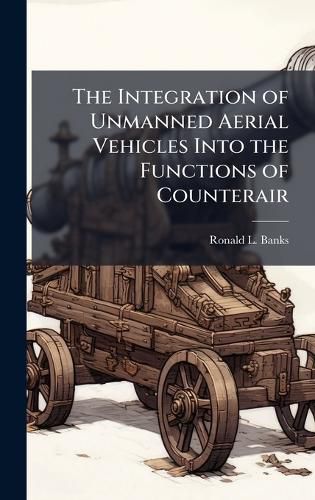Readings Newsletter
Become a Readings Member to make your shopping experience even easier.
Sign in or sign up for free!
You’re not far away from qualifying for FREE standard shipping within Australia
You’ve qualified for FREE standard shipping within Australia
The cart is loading…






With the recent draw down of the US military after the end of the Cold War, the US Department of Defense (DoD) is placing considerable emphasis on employing a lighter, leaner, and more lethal military force to accomplish the strategic objectives mandated by political leadership. As a force enabler for military forces, Unmanned Aerial Vehicles (UAVs) recently demonstrated their potential during NATO military operations in Kosovo. Their activities weren't limited to merely gathering enemy intelligence. As a result of advancements in UAVs capabilities, UAVs expanded their operations by directly assisting in combat missions. The resulting logical question that evolved out of the Kosovo operations is, can UAVs be more actively integrated into other military functions to enhance mission accomplishment? More specifically, can UAVs be incorporated into the function of gaining and maintaining control of the air for US forces? To completely answer this question, this research paper will first analyze the current background of UAVs as seen in recent military operations. Secondly, the function of counter air will be examined to identify the deficiencies US forces have in obtaining control of the air. Third, the present and future capabilities that UAVs can bring to the fight will be identified. Fourth, a detailed examination of which UAVs payloads can be incorporated into the function of counterair will be accomplished. Fifth, this paper will show that UAVs can be effectively integrated to enhance US military weapons systems accomplishment of the function of counterair. Finally, this author will briefly discuss one possible plan to integrate UAVs in the function of counterair to overcome the noted deficiencies.
This work has been selected by scholars as being culturally important, and is part of the knowledge base of civilization as we know it. This work was reproduced from the original artifact, and remains as true to the original work as possible. Therefore, you will see the original copyright references, library stamps (as most of these works have been housed in our most important libraries around the world), and other notations in the work.
This work is in the public domain in the United States of America, and possibly other nations. Within the United States, you may freely copy and distribute this work, as no entity (individual or corporate) has a copyright on the body of the work.
As a reproduction of a historical artifact, this work may contain missing or blurred pages, poor pictures, errant marks, etc. Scholars believe, and we concur, that this work is important enough to be preserved, reproduced, and made generally available to the public. We appreciate your support of the preservation process, and thank you for being an important part of keeping this knowledge alive and relevant.
$9.00 standard shipping within Australia
FREE standard shipping within Australia for orders over $100.00
Express & International shipping calculated at checkout
With the recent draw down of the US military after the end of the Cold War, the US Department of Defense (DoD) is placing considerable emphasis on employing a lighter, leaner, and more lethal military force to accomplish the strategic objectives mandated by political leadership. As a force enabler for military forces, Unmanned Aerial Vehicles (UAVs) recently demonstrated their potential during NATO military operations in Kosovo. Their activities weren't limited to merely gathering enemy intelligence. As a result of advancements in UAVs capabilities, UAVs expanded their operations by directly assisting in combat missions. The resulting logical question that evolved out of the Kosovo operations is, can UAVs be more actively integrated into other military functions to enhance mission accomplishment? More specifically, can UAVs be incorporated into the function of gaining and maintaining control of the air for US forces? To completely answer this question, this research paper will first analyze the current background of UAVs as seen in recent military operations. Secondly, the function of counter air will be examined to identify the deficiencies US forces have in obtaining control of the air. Third, the present and future capabilities that UAVs can bring to the fight will be identified. Fourth, a detailed examination of which UAVs payloads can be incorporated into the function of counterair will be accomplished. Fifth, this paper will show that UAVs can be effectively integrated to enhance US military weapons systems accomplishment of the function of counterair. Finally, this author will briefly discuss one possible plan to integrate UAVs in the function of counterair to overcome the noted deficiencies.
This work has been selected by scholars as being culturally important, and is part of the knowledge base of civilization as we know it. This work was reproduced from the original artifact, and remains as true to the original work as possible. Therefore, you will see the original copyright references, library stamps (as most of these works have been housed in our most important libraries around the world), and other notations in the work.
This work is in the public domain in the United States of America, and possibly other nations. Within the United States, you may freely copy and distribute this work, as no entity (individual or corporate) has a copyright on the body of the work.
As a reproduction of a historical artifact, this work may contain missing or blurred pages, poor pictures, errant marks, etc. Scholars believe, and we concur, that this work is important enough to be preserved, reproduced, and made generally available to the public. We appreciate your support of the preservation process, and thank you for being an important part of keeping this knowledge alive and relevant.